THE FARMS LINES OF BROOKLYN (1874)
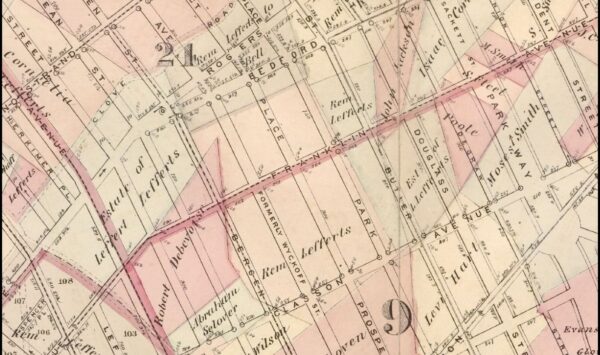
******************************************************************************************************************************** Brownstone Detectives investigates the history of our clients’ homes. The story you are about to read was composed from research conducted in the course of one of those investigations. Do you know the history of YOUR house? ******************************************************************************************************************************** Brooklyn was once one giant farm. At some point, as the farms began to be split up to be sold to developers – those who wanted to build rows of prized brownstones – companies also began to pop up which developed maps showing what types of buildings existed on every “lot” within the city. Although no longer used for fire insurance purposes, they are great tools for those owners wishing to research the histories of their properties. If you own a home in New York City, these maps can help you to determine how old it is, what else had been built in the area when your house was new, and, on some maps, the name of the farmer that had once owned your land. Find yours HERE. Follow @BrownstoneDetec Share ———————————————————————————————————————– The Brownstone Detectives Brownstone Detectives is an historic property research agency. Our mission is to document and save the histories of our clients’ homes. From our research, we produce our celebrated House History Books and House History Reports. Contact us today to begin discovering the history of your home.
THE “WEIRFIELD” HOUSE ON THE HILL (1850)
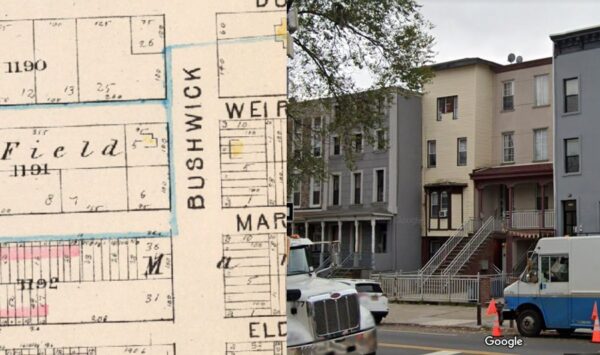
******************************************************************************************************************************** Brownstone Detectives investigates the history of our clients’ homes. The story you are about to read was composed from research conducted in the course of one of those investigations. Do you know the history of YOUR house? ******************************************************************************************************************************** If Bushwick Avenue were a family, it would likely be an entertainingly and curiously dysfunctional clan. It would maybe be something akin to that harmless uncle who comes to Thanksgiving dinner, doesn’t talk about politics, but engages in witty banter and sips a few too many vermouths. Some houses on the avenue present as mindlessly conforming rowhouses — lined up at attention like toy soldiers. Squeezed within some of those rows, however, we sometimes find structures that seem oh-so-slightly out-of-place – as though they were built in – and transported from – another time and galaxy. One such structure is a 172-year-old house that appears as though it should be sitting alone upon a hill with a view to unfolding valleys of pastureland. THE HOUSE ON THE HILL In the mid-1800s, No. 1250 Bushwick Avenue was the only house on the south side of Bushwick Avenue between Weirfield and Margaretta (Halsey) Streets. The house was erected in approximately 1850 and, in its day of glory, stood on a knoll about six feet above street level, flanked on either side by immense maple trees. The grounds sloped gently down to a stone wall, five feet above the grade of the street, which extended along the street frontage from Weirfield street to Margaretta […]
YOUR BROWNSTONE WAS NOT BUILT IN 1899
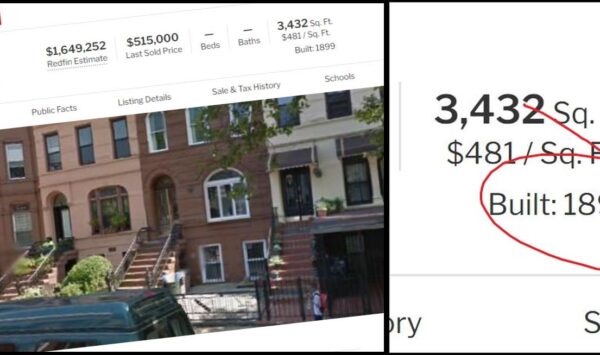
******************************************************************************************************************************** Brownstone Detectives investigates the history of our clients’ homes. The story you are about to read was composed from research conducted in the course of one of those investigations. Do you know the history of YOUR house? ******************************************************************************************************************************** We’ve all “Googled” ourselves, right? But have you ever Googled your house? Most people do this out of curiosity – just to see what might pop up. If you’ve ever done it, though, you were likely greeted with an extensive list of real estate sites that literally entreated you to click their links. Click on one of them and you may be surprised at what you find. Apparently, using their fancy algorithms, these sites can tell you nearly every detail under the sun about your property. These details include: the number of stories your house has, how many units are inside, the legal type of building it is, the district it lies within, its floor plans, the name of its neighborhood, its estimated value, various documents and permits filed, past sales, rental – and the list goes on and on… You may possibly even see images of the exterior of your rowhouse, as well as numerous snapshots of the inside (likely from a previous sale). For the most part you may note that everything – so far as you can tell – is relatively correct. There is, however, one very important piece of information that, on 99% of informational listings (including yours), is dead wrong… “BUILT IN 1899”? Why does nearly […]
THE PAINTED LADY OF SACKETT STREET (1958)
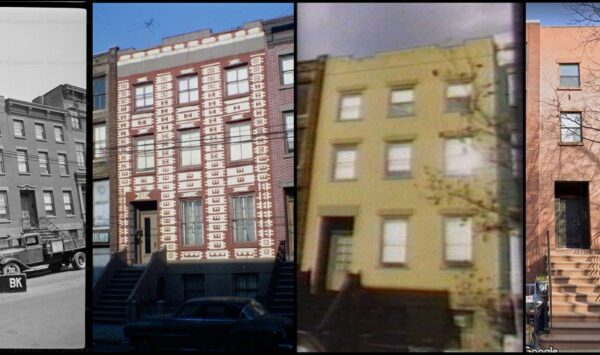
******************************************************************************************************************************** Brownstone Detectives investigates the history of our clients’ homes. The story you are about to read was composed from research conducted in the course of one of those investigations. Do you know the history of YOUR house? ******************************************************************************************************************************** Houses as old as the historic brownstones of New York City have had a lot of time to experience change – change of ownership, change of status, as well as physical change. Much of that change often occurs on the inside of these buildings as their occupancy type changes. The most prevalent change of this type that occurs over time is the change of a property from a single family house to a mutiple dwelling or boarding house. Just outside the Cobble Hill Historic District, sits a much-altered brownstone on Sackett Street between Court and Clinton Streets, No. 275. Constructed pre-1855 as a one-family house it would experience many change over the years. Its original address was No. 160. Its original owner appears to have been William H Perry, a stock broker on Wall Street. By the 1860s, the Forsyth family lived in the Sackett Street rowhouse. Orlando Forsyth was a jeweler who, in the 1840s, had had a showroom on Fulton Street at No. 99. The house would begin taking boarders in the 1870s, continuing at least through most of the 20th century. THE LADY GETS A FACELIFT At face, however, the physical changes of No. 275 seem to be the most striking. While, in its original state, it resembled […]
BURY ME DEEP, IN A METALLIC CASE (1852)
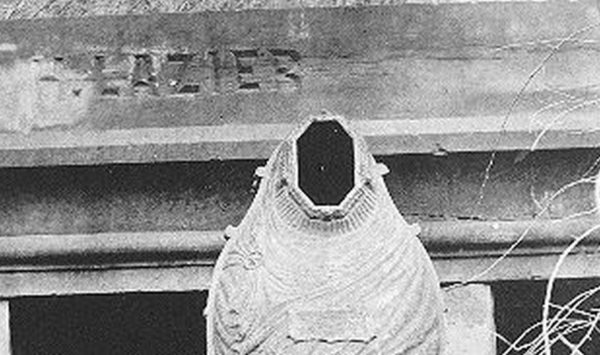
******************************************************************************************************************************** Brownstone Detectives investigates the history of our clients’ homes. The story you are about to read was composed from research conducted in the course of one of those investigations. Do you know the history of YOUR house? ******************************************************************************************************************************** Beware BODY SNATCHERS! Beware GRAVE ROBBERS! BEHOLD, the Fisk Metallic Burial Case! F.A. MORREL, UNDERTAKER AND DISTRIBUTOR, 57 MYRTLE In 1852, a Brooklyn Heights “sexton and general undertaker” by the name of F. A. Morrel, practicing at his “coffin-wareroom” at No. 57 Myrtle Avenue, was promoting to the Brooklyn public the latest design in funerary offerings – the Fisk Metallic Burial Case. Originally designed as a vessel that would keep a dead body from decomposing if the individual had died far from home, the Fisk Metallic Burial Case would soon “take on a new life,” so to speak, for those who wanted their nearby loved ones to keep from rapidly decomposing, as well. For this reason, many Fisk ads promoted their cases for the general preservation of the body – which was important to those whose burial case included a “viewing plate,” allowing for the living relatives to view the departed one’s face. “From a coffin of this description the air may be exhausted so completely as entirely to prevent the decay of the contained body on principles well understood,” noted Fisk’s patent, “or, if preferred, the coffin may be filled with any gas or fluid having the property of preventing putrefaction.” Another of the selling points of these cast iron […]
BURIED ALIVE IN BROOKLYN!
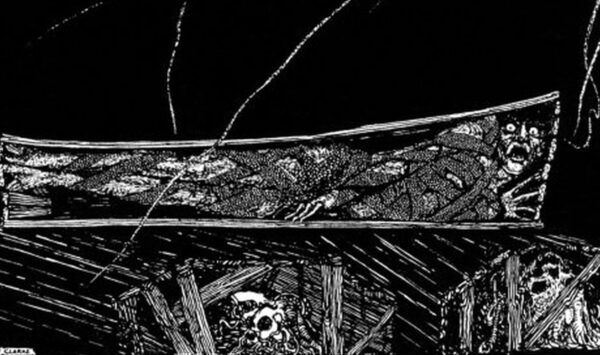
******************************************************************************************************************************** Brownstone Detectives investigates the history of our clients’ homes. The story you are about to read was composed from research conducted in the course of one of those investigations. Do you know the history of YOUR house? ******************************************************************************************************************************** Victorian Brooklyn was mortified at being buried alive. If newspapers and patents together are any indication of an age, then we know the fear was strong. Research performed toward the end of the 19th century indicated that approximately 700+ cases of being buried alive had been documented. Such premature burials apparently took place in nearly every major city, in numerous small towns, and across the world. Whether they were occurring in droves or not, though, was of little import. The overriding principal here was public perception. And the perception was this: Premature burials were happening ALL THE TIME. And perhaps they were. BROOKLYN & NEW YORK TESTAMENTS Brooklyn’s most famous case of being buried alive involved a Manhattan woman by the name of Virginia McDonald, who, after she had perished, was brought to Brooklyn and buried in Green-Wood Cemetery. The young woman’s mother, though, had “had a presentiment, shortly after her burial, that she was still alive.” The thought ate at the woman for some time until she decided to share her fears with her family members. They understandably attempted to assuage her, even resorting to joking with her when she could not be consoled. Finally, to settle her doubts, they had the casket opened for their mother. “The body was […]
“HE HAS MADE HER…CIVILLY DEAD” (1848)
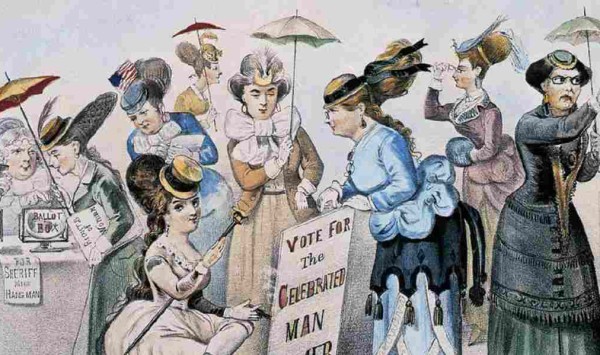
******************************************************************************************************************************** Brownstone Detectives investigates the history of our clients’ homes. The story you are about to read was composed from research conducted in the course of one of those investigations. Do you know the history of YOUR house? ******************************************************************************************************************************** In July of 1848, Elizabeth Cady Stanton, an early organizer for women’s suffrage movements in the United States, changed the course of property rights for married women forever when she uttered a stunning declaration about their legal mortality. They were, she noted dryly, “civilly dead.” While Stanton was not attacking the institution of marriage itself, she was confronting American society with a challenge to the institution’s precepts on women’s capacities to control their very destinies. Most importantly, she believed the forfeiture of married women’s autonomy to be a mistake. As things then stood, women, as soon as they tied the proverbial knot, were in positions of almost total dependency on their husbands. The legal status of married women at the time, referred to as coverture, was famously placed into stark terms by the English jurist William Blackstone in his 18th century legal classic, Commentaries on English Law: “By marriage, the husband and wife are one person in the law: that is, the very being or legal existence of the woman is suspended during the marriage, or at least is incorporated and consolidated into that of the husband: under whose wing, protection, and cover, she performs every thing.” As a result of the suspended existence of married women, they could not own […]
SUNSETTING ON A BED-STUY BOULEVARD (1909)
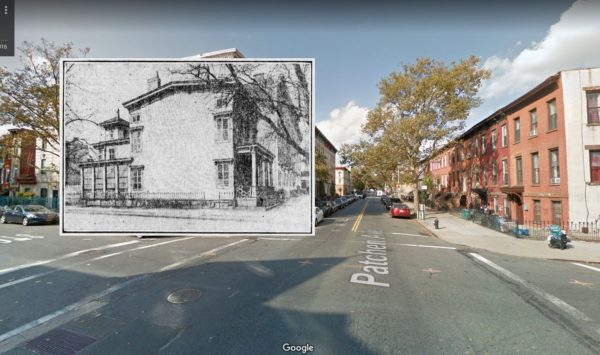
******************************************************************************************************************************** Brownstone Detectives investigates the history of our clients’ homes. The story you are about to read was composed from research conducted in the course of one of those investigations. Do you know the history of YOUR house? ******************************************************************************************************************************** In 1909, a landmark was about to be destroyed. It was quite common, though, at the time for owners to tear down the antiquated wood-frame mansions that dotted Brooklyn’s lamdscape. Since the new brownstone houses had become all the rage in the 1880s, these tinder “firetraps” had become redundant, difficult to sell, and simply unstylish to live in. By the late 19th century, they were being sold, in many cases, for the value of their land as building lots. And with the demise of these historical artifacts, went some truly beautiful examples of mid-19th century architecture, few of which remain with us to this day. THE DE MILLE HOUSE The De Mille house was built around the middle of the 19th century for the family of that name, “and it has been a landmark in that region since the days when it was surrounded by open fields.” Yes, even Bedford-Stuyvesant – today chockablock with brownstone and masonry homes – was once – even before the advent of wood-frame homes – forested land alongside open virgin fields. As a matter of fact, the corner of Quincy and Patchen, in the 1850s, was little more than hills, dales, dirt lanes, and the vague promise of a future suburban city. “Broadway, which is nearby, […]
A STREET GROWS IN BROOKLYN (1845)
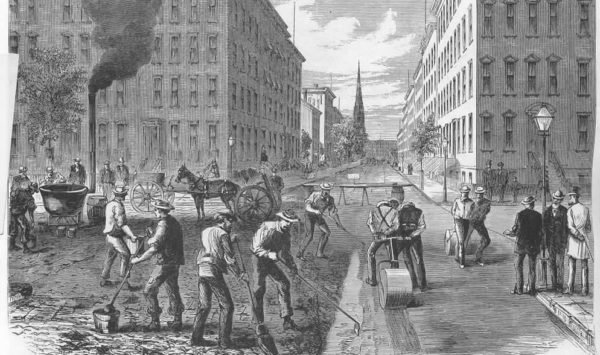
******************************************************************************************************************************** Brownstone Detectives investigates the history of our clients’ homes. The story you are about to read was composed from research conducted in the course of one of those investigations. Do you know the history of YOUR house? ******************************************************************************************************************************** The growth of brownstone Brooklyn took place over a great many years. The long contiguous lines of rowhouses rocketed skywards across the city through the economic good times, as well as – at a less robust pace – through the many debilitating recessions. But rocket they did, leaving the footprints of the many contractors and builders who changed the landscape of Brooklyn into a City of Houses. Another mark that the contractors and builders left – although one not as celebrated today – was the complicated system of flagging, pipes, sewers, cisterns, streetlamps, and sometimes trolley tracks, that lined the streets and led to those very rowhouses. Each delivery and receiving system that connected each rowhouse to the city was an important step toward the development of the city. Before each row of houses was constructed (and sometimes while they were being constructed, or even soon afterwards), the development of each street and neighborhood was an important part of attracting the homeowners to Brooklyn. THE BIRTH OF BOERUM HILL Boerum Hill had only recently been planned for with a street grid system that would develop alongside of a vast network of sidewalks, sewers, street lamps, gas lines, and water mains. At this time, however, in the 1840s, it barely resembled such […]
THE “IMPOSING” VIEW FROM OCEAN HILL (1848)
******************************************************************************************************************************** Brownstone Detectives investigates the history of our clients’ homes. The story you are about to read was composed from research conducted in the course of one of those investigations. Do you know the history of YOUR house? ******************************************************************************************************************************** Before there was Ocean Hill—the Bedford-Stuyvesant neighborhood—there was Ocean Hill—the section of Green-Wood Cemetery. Whether one influenced the other is lost to the ages. What is clear, however, is that both locations got their names from a geographical point from which a body of water could clearly be viewed. “At this point, now known as Ocean Hill,” described a contributor (whose pen-name, revealingly, was Investment) in an edition of the Brooklyn Daily Eagle published just a few years before the Civil War began, “we have reached the highest point on the avenue (Fulton Street) and the most commanding elevation of ground in the city; and which, for grandeur, beauty and variety of its scenery, cannot be surpassed. “The ocean view,” Investment continued, “is especially grand and imposing.” Investment, whose contribution to the paper existed as a thinly veiled promotional piece for Brooklyn, was describing the “advance in the value of Brooklyn real estate.” From Fulton Ferry he advanced down Fulton Avenue to “gather such information as will enable the public to form an intelligent estimate as to the present and prospective value of property on and near this great thoroughfare.” “At this point Fulton avenue is distant but a few hundred feet from Atlantic avenue on the south, and Broadway on […]